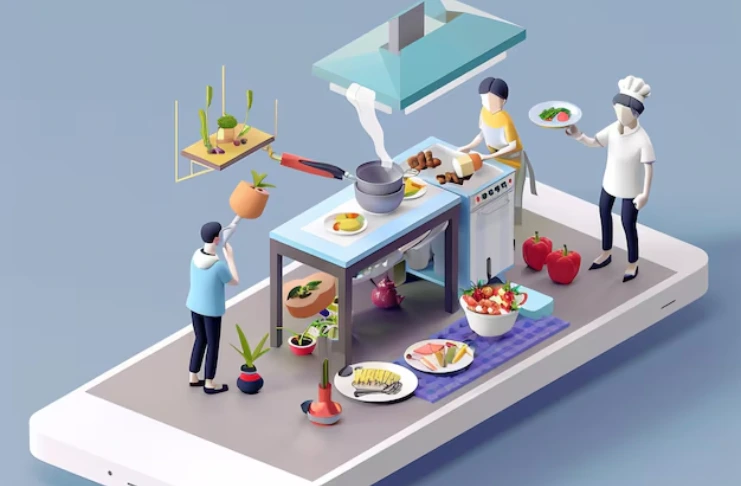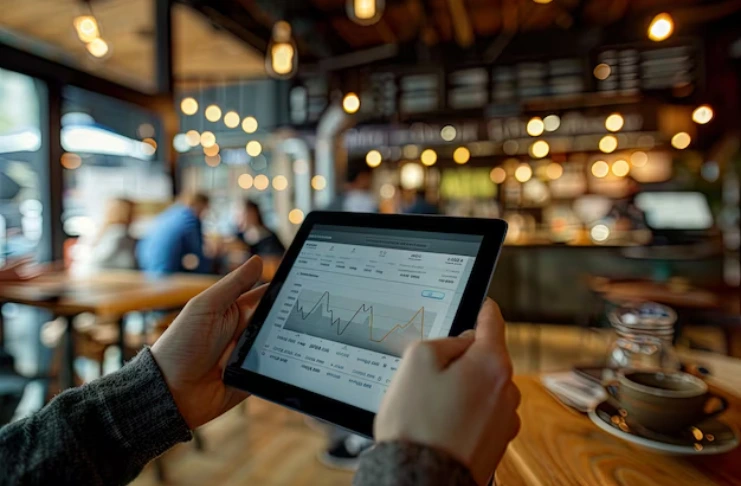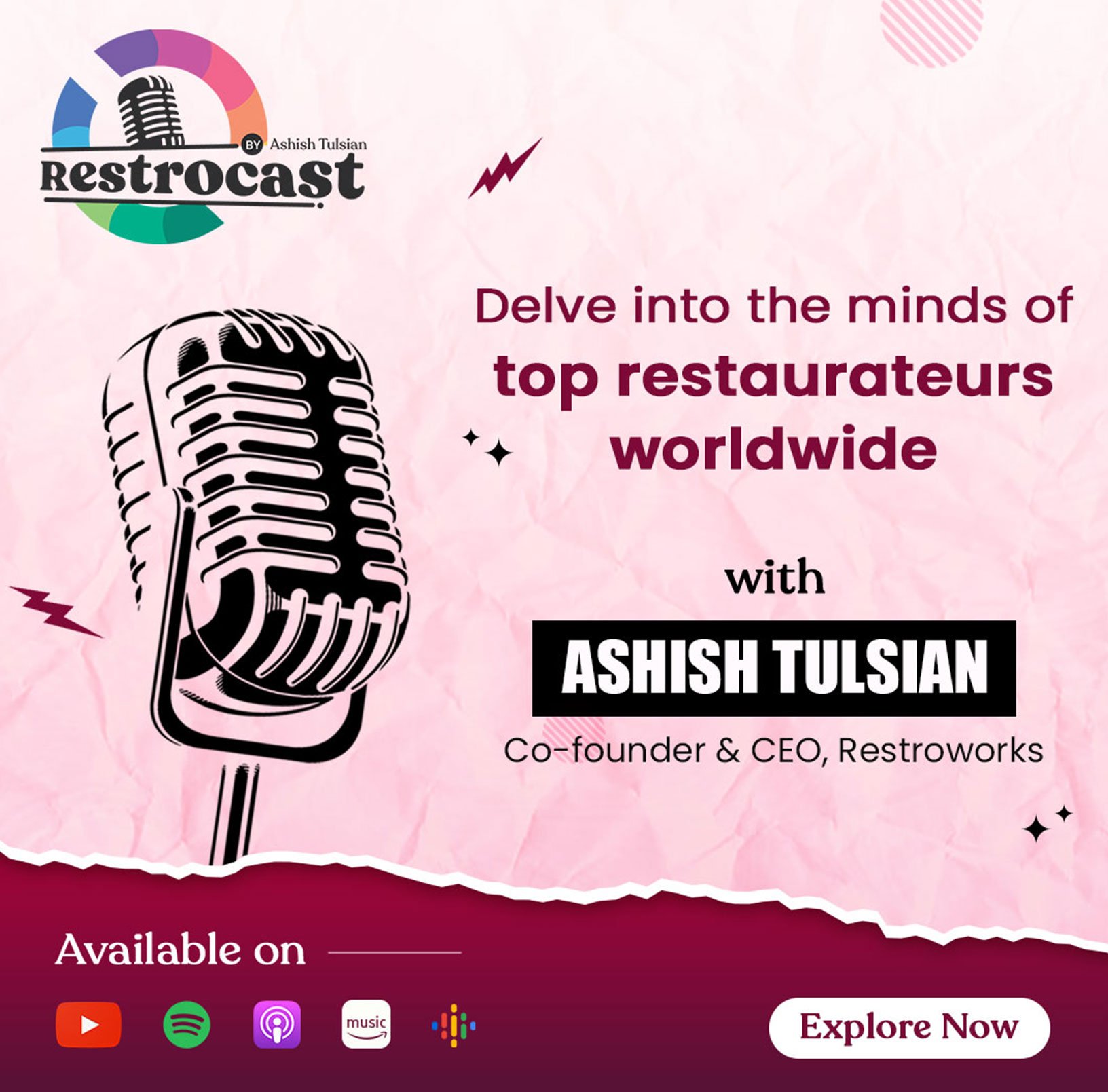
There was a time when restaurant managers had to be on-site to oversee all the details of operations, from managing inventory to ensuring staff efficiency. But those days are behind us. With the advent of the Internet of Things (IoT), restaurant managers can control everything remotely, from freezer temperatures to dining room lighting, using a smartphone and a reliable Wi-Fi connection. This unimaginable control level is now within reach, empowering managers to streamline restaurant operations with unprecedented ease.
In this blog, we explore the transformative impact of IoT on the restaurant industry, how it’s being applied in different areas, and the challenges involved in adopting this cutting-edge technology.
Real-Time Monitoring for Enhanced Restaurant Management

One critical advantage of IoT in the restaurant industry is its ability to gather and analyze real-time data. This empowers managers to make well-informed decisions to boost business growth, reduce costs, and improve operational efficiency. IoT-enabled devices allow managers to track customer traffic, peak hours, and average orders easily. These insights enable restaurant owners to optimize staffing, enhance marketing strategies, and adjust menus to cater to customer preferences.
For example, sensors and IoT devices connected to the restaurant’s point-of-sale (POS) system can collect detailed information about consumer behavior, such as preferred dishes or peak foot traffic times. This enables restaurants to improve the customer experience by customizing their offerings and streamlining operational processes like strategic purchasing and demand forecasting.
According to a report by Gartner, the number of IoT devices globally reached 14.4 billion in 2022, and the food service industry is no exception. By leveraging IoT analytics, restaurant brands can drive productivity, optimize resource allocation, and proactively adapt to evolving customer preferences, keeping them ahead in a competitive market.
Food Waste and Inventory Management
The issue of food waste is a pressing one for restaurants worldwide. In the U.S. alone, restaurants waste an astonishing $57 billion annually on uneaten food, contributing to increased costs and environmental harm. A significant contributor to food waste is the inability to properly track and manage perishable items with short shelf lives, such as fresh seafood, fruits, and vegetables. These ingredients are often bought daily and need to be used quickly to maintain quality, but inefficiencies in inventory tracking can lead to large quantities of food going to waste.
IoT technology offers a game-changing solution to this challenge by enabling real-time tracking and monitoring of food products throughout the supply chain. Connected sensors can monitor critical variables like temperature and humidity in storage areas, ensuring food is stored optimally. This significantly reduces the risk of spoilage and contamination, allowing restaurants to serve safe, high-quality meals while consistently decreasing wastage.
Take the example of IoT-enabled refrigerators and freezers equipped with temperature sensors. These appliances can automatically adjust their cooling settings and send alerts when temperatures fluctuate beyond acceptable ranges, preventing spoilage before it happens. Smart kitchen appliances can also track food expiration dates and inventory levels, allowing restaurants to manage stock and avoid over-purchasing, reducing waste efficiently.
Automation and Equipment Maintenance
Automation is another area where IoT is transforming restaurant operations. Traditionally, restaurant employees were responsible for monitoring and maintaining kitchen equipment, frequently disrupting workflow and increasing operational costs. By incorporating IoT devices into these appliances, managers can automatically monitor equipment performance, energy consumption, and potential problems without requiring constant human intervention.
For example, ovens, deep fryers, refrigerators, and HVAC systems can be outfitted with IoT sensors that monitor critical data points such as temperature, energy consumption, and maintenance requirements. These sensors can send automated alerts to managers when an appliance needs to be serviced or parts replaced. This proactive maintenance prevents costly breakdowns, extends equipment life, and increases operational efficiency.
McDonald’s, one of the leading fast-food chains, has already adopted IoT to automate and monitor kitchen equipment, from fryers to coffee machines. These connected appliances help reduce human error and ensure consistency across all locations while minimizing energy consumption. This type of automation gives restaurant owners peace of mind, knowing their equipment runs efficiently even during peak hours.
Energy Savings and Cost Efficiency
Energy efficiency is critical for restaurant owners looking to reduce costs and operate sustainably. IoT technology plays a vital role in optimizing energy consumption by monitoring the performance of restaurant appliances and providing insights into areas where energy can be saved.
Energy Management Systems (EMS) powered by IoT sensors can track the energy usage of individual appliances and provide recommendations for optimizing their efficiency. For example, a Pizza Hut franchisee leveraged IoT to monitor its energy usage and reported an 18% reduction in monthly energy costs, translating to an estimated $2 million annual savings.
Smart appliances, such as fryers equipped with IoT sensors, can also help reduce energy consumption by maintaining precise temperatures and alerting employees when perfectly cooked food is ready. This reduces wasted energy from overcooking or reheating food, resulting in cost savings. These savings enable restaurant owners to reinvest in other business areas, such as improving the customer experience or expanding their menu options.
Enhancing the Customer Experience

One of the most exciting applications of IoT in the restaurant industry is its potential to enhance the customer experience. By gathering and analyzing customer data, restaurants can tailor their offerings to meet individual preferences, allergies, and dietary restrictions, providing a highly personalized dining experience.
IoT-powered systems can help chefs and servers remember returning customers’ preferences, allowing them constantly to provide personalized and safe meals. This level of personalization enhances customer satisfaction, builds long-term loyalty, and encourages repeat business. For instance, restaurants can use IoT-powered Customer Relationship Management (CRM) solutions to track guests’ previous orders and suggest dishes or promotions based on their tastes.
Furthermore, IoT devices such as intelligent tablets placed at tables can provide diners with interactive menus highlighting recommended dishes based on previous visits, dietary needs, or even the time of day. This results in a more engaging and seamless dining experience, strengthening the restaurant’s customer relationship.
Considerations for Successful IoT Integration
While the benefits of IoT in the restaurant industry are clear, implementing this technology requires careful planning and consideration. Below are some critical steps restaurant owners should take to integrate IoT into their operations successfully:
- Establish a clear strategy: Before incorporating IoT solutions, define specific business goals and key performance indicators (KPIs) supporting your objectives. Whether reducing food waste or enhancing customer personalization, having a clear strategy will guide your IoT investments.
- Invest in scalable infrastructure: Choose IoT devices and systems that can scale with your business. As your restaurant grows, your technology should be able to adapt to changing needs, whether that means handling more data or supporting new devices.
- Prioritize data security: IoT devices gather significant amounts of data, including sensitive customer information. Implement robust security measures to protect this data and prevent potential breaches.
- Ensure seamless integration: Select IoT solutions that seamlessly integrate with your restaurant’s existing infrastructure, including your POS system, CRM, and inventory management software. This ensures a smooth implementation without disrupting daily operations.
- Continuous improvement: Regularly evaluate your IoT system to identify areas for improvement. Stay updated with new IoT technologies and consider upgrading your devices and systems to stay competitive in a rapidly evolving industry.
- Train your staff: Empower your employees with the knowledge and skills to make the most of IoT solutions. Provide extensive training on how these technologies can improve safety, efficiency, and operational transparency.
Conclusion
The impact of IoT on the restaurant industry is nothing short of transformative. IoT has revolutionized how restaurants operate, from real-time monitoring and automation to enhanced customer experiences and energy savings. By leveraging IoT technologies, restaurant owners can optimize resources, reduce waste, streamline operations, and deliver personalized dining experiences that foster customer loyalty. As IoT continues to evolve, restaurants that embrace these innovations will stay ahead of the curve and set new standards for efficiency, sustainability, and customer satisfaction in the industry.








